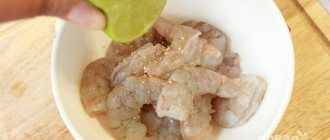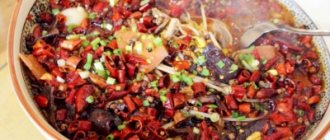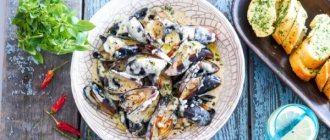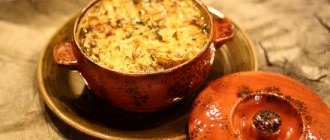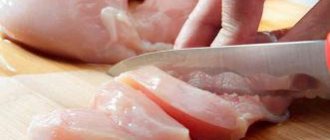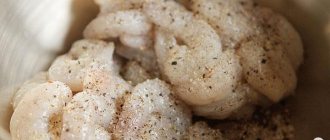Now that Japanese restaurants have appeared in almost every city, many have already enjoyed the Japanese dumplings Yaki Gyoza.
This is a rather unusual and very colorful dish, therefore, you should learn to cook it yourself in order to do it at any time convenient for you. Anyone can master this recipe, you just need to find the right ingredients. It should be noted right away that for preparing dumplings it is best to use ready-made dough. If you knead it yourself, there is a risk of getting an insufficiently thin and elastic mass. It is also wise to learn how to cook two versions of Yaki Gyoza - with meat and vegetarian, because some people do not eat meat dishes on principle. In general, you can use almost any filling, feel free to experiment.
Japanese dumplings Yaki Gyoza, like some other local dishes, originally appeared in China. For this reason, their name is written in Chinese characters, although it is read in Japanese.
The ancestor of Yaki Gyoza is a dish called Jiaozi, which is served on the New Year's table in China. What is their difference? If you love dumplings, you will quickly understand the difference. The Japanese version has a thinner dough and a characteristic garlic flavor. Also, local chefs practically do not use salt and other spices. Among other things, Yaki Gyoza are fried dumplings, they are cooked in a frying pan rather than in a saucepan.
Ingredients for Japanese dumplings
For the dough, take 0.5 cups of water and almost a cup of flour.
For the filling you need about two hundred grams of minced meat, cabbage leaves, neera or a bunch of green onions, garlic cloves, ginger root, soy sauce, salt, pepper and sesame oil.
Knead the dough:
- Knead the dough from water and flour.
- Cover with a cloth and put away to rest.
- Pinch off a piece and roll it into a flat circle of arbitrary size, making the middle thicker than the edges.
Preparing the filling:
- Chop the greens and cabbage leaves into smaller pieces, chop the garlic cloves and ginger. The amount of greens is on par with the mass of meat.
- Salt the cabbage and leave for 2 minutes, then squeeze.
- Add meat to the greens, salt and pepper, add soy sauce and sesame oil and mix.
Modeling:
- Place the filling in the middle of the mug.
- Moisten the circle around the edges with water.
- Fold the circle in half and pinch the edges.
- Make folds on one side.
Cooking:
- Heat the oil in a frying pan and place the dumplings on it.
- Pour water into the frying pan, but not to the brim, and simmer for about seven minutes.
How to cook gyoza - detailed instructions
- First of all, let's do the test. Sift the flour into a deep bowl and pour in the boiling water. Stir the flour mixture into crumbs. Add vegetable oil and mix everything well. Form a ball, wrap it in cling film and set aside for half an hour.
- After the time has passed, put the dough on the table, knead it thoroughly again and wrap it again in cling film. Leave for 30 minutes.
- Clean the defrosted shrimp and cut into small pieces. You should not boil them in boiling water, as they will cook in a frying pan. Peel the ginger and grate it on a fine grater. Chop the green onions and chives. Combine all products in a deep bowl. The filling should be smooth and sticky.
- We take the dough out of the film, divide it into two parts, each of which we roll out thinly (thickness 2-3 m). We cut out the shape of a mug (as for dumplings), place the filling in each of them, fold the mold in half and pinch it with curly folds.
- Take a frying pan and grease it with vegetable oil. Place the dumplings and fry them on one side for about a minute. Add boiling water to the pan until it covers the bottom. Cover with a lid and cook for 5 minutes. Remove the lid and wait for all the water to evaporate. Add sesame oil and keep the gyoza on the fire for another minute. Transfer the Chinese dumplings to a plate with the golden crust on top and serve.
- Cooking Chinese dumplings at home - a delicious and simple recipe
- Chicken dim sum - delicious Chinese dumplings
- How to cook dumplings at home - a delicious recipe with photos
In Russian it’s “pelmen”, and in Japanese it’s “genza”
In Russian “pelmen”, and in Japanese “genza”
Cao Tzu is not the name of the Chinese philosopher, but the name of the common ancestor of all dumplings in the world. Georgian khinkali, Italian ravioli and Japanese genza, of course, protest, but the fact remains that the Chinese were first.
Now frozen store-bought dumplings arouse no more interest in us than a slice of bread with sausage, but once they were a real object of cult, part of an ancient ritual.
Dumplings or, as they were then called, pel-nannies (translated from Finno-Ugric as “bread ears”) among the inhabitants of the Urals were a symbol of animal sacrifice, in particular livestock. That is why the recipe for the famous Ural dumplings contains three types of meat: lamb, beef and pork.
Each nation has its own arrangement of this hearty dish: the Chinese, for example, like to mix meat and fish fillings, the Koreans add glass rice noodles and spicy vegetables to their dumplings, they are called mandu. And the Buryats only prepare steamed buzas, and the meat and onions are not minced through a meat grinder, but finely chopped to preserve the taste and juice. Buzy, as you might guess, later became manti - the hallmark of Uzbek cuisine. By the way, buzy got its name from the first Chinese dumplings, Tsao Tzu.
Ukrainians and Italians prepare sweet dumplings; think of dumplings with cherries or ravioli with sweet cheese. Khinkali is famous for the sauces that are served with it, and children love to eat crispy fried Japanese genza.
And there are countless dumpling traditions, too. In China, for example, dumplings are always prepared for the New Year, and the fillings are made in different ways. If you come across it with greens - to joy, with pepper - to love, with a coin - to wealth. There are also rare fillings. Russian tsars, for example, treated foreigners to dumplings with bear meat or wapiti (East Siberian deer) meat.
But the most difficult dumplings are still considered Chinese! For example, how do you like “Lotus on the Water”, when 13 holes are made on the dumplings, symbolizing the 13 dynasties of Shaanxi Province, or “Empress Mother” - the smallest dumplings in the world with filling, the size of a pearl. However, I assure you that they taste very wonderful!
RECIPE Alexandra Popova , chef of the TsDL
Dumplings with salmon DO:
For minced meat: Salmon fillet 1500 g Sauteed onion 250 g Bechamel sauce 1200 g Dill 15 g Parsley 12 g Pepper 4 g Salt 20 g
For the dough: Flour 1300 g Mineral water 500 g 2 eggs Vegetable oil 20 g Salt 20 g
HOW TO COOK:
1. Cut the fish into small cubes, add onion, parsley, dill, bechamel sauce. Salt and pepper. To stir thoroughly. 2. Sift the flour. Break eggs into water, add salt, vegetable oil, slowly add flour and mix everything. Knead the dough well until it becomes elastic and homogeneous, and let it rest for 15-20 minutes. 3. Divide the dough into two parts and pass through a pasta machine. Or - roll it out using a rolling pin. Using an iron ring, cut out circles. Place a spoonful of minced meat on each, fold the circle in half and pinch the ends of the product so that you get a crescent or “ear”. 3. Cook the dumplings in a saucepan until they float. 4. Remove the finished dumplings with a slotted spoon, dry and place on a plate. Sprinkle with herbs and pour oil. Serve with sour cream.
Alexander Popov : “Dumplings with fish are one of the favorite dishes of the Pomors. The traditional recipe does not provide for bechamel - this is my know-how: with the sauce, the minced meat becomes juicier and piquant. The main thing, when making dumplings, do not forget: if the edges do not fit well, moisten them a little with water. The minced meat should lie loosely inside so that the juice released during cooking remains inside, otherwise your dumplings will burst. By the way, dumplings do not have to be boiled. They can be fried in melted butter until golden brown. Or put it out. To do this, already fried dumplings are placed in a saucepan, poured with a suitable broth, and sour cream is added. Then, cover the saucepan tightly with foil and put it in the oven for 20 minutes, and serve it with the broth in which they were stewed.”
Let's start the process
- First of all, place flour, starch and salted water in a separate container. Mix the dough. After which it needs to be kneaded for 10 minutes.
- Then we transfer it to a polyethylene or silicone shell and leave to rest for 1 hour.
- After the required time has passed, knead it for another 10 minutes.
- After which we leave to rest for another 60 minutes. Then knead again for 10 minutes.
- Now let's start preparing the filling. To do this, peel the carrots and cut into small pieces. Transfer to a blender bowl.
- Add Chinese cabbage and grind until smooth.
- We clean the shrimp from the shell and intestines. Add to the rest of the ingredients in a blender bowl. Add seasonings and puree everything until smooth.
- Divide the dough into 3-4 parts. We take one of them, and send the rest to be stored under film.
- Sprinkle the dough with starch and roll it out very thin. For this you will need a thin and long rolling pin. This process requires the addition of starch. As a result, the dough should be almost transparent.
- Take a round shape. You can use a glass or glass for this. Cut out circles.
- Place a little filling in the center of each and connect the edges crosswise. In order for the dough to stick well, you can moisten it a little.
- The steamer tray needs to be covered with Chinese cabbage leaves. We lay the blanks on top so that they practically do not touch each other.
- Steam, covered, for 5-6 minutes. Serve with soy sauce.
You may also like the awesome manti with potatoes and pumpkin, the recipe for which you will find on our Recipe Ideas website.
Bon appetit!
Fried rice with shrimp (Seu bokgeum pub) with video
Fried rice with shrimp (Seu bokgeum pub) with video
Shrimp Fried Rice (Seu bokgeum pub) is a delicious Korean dish that is served as a lunchtime meal. Many Korean dishes are famous for their heat. Seu pokkeum pub is one of the few treats from the cuisine of the Land of Morning Freshness, the preparation of which does not use hot seasonings. However, you will always be offered a spicy kimchi snack to accompany this dish. A portion of Seu bokkeum pub is often served with a bowl of broth, which is used to wash down the dish during the meal.
The dish is prepared from boiled rice, which, after standing overnight in the refrigerator, becomes loose and airy. Rice is fried with garlic, shrimp, egg and finely chopped green onions with the addition of sesame seeds and oyster sauce. If you wish, you can add pepper to the pokgeum pub during the cooking process. The dish is very filling - just what you need to refresh yourself throughout the day. Delicious, slightly salty rice with a pleasant light sweetness characteristic of oyster sauce, goes well with crispy shrimp and a fried egg. And it cooks very quickly.
Ingredients (for 2 servings):
- yesterday's boiled rice - 2 servings,
- shrimp – 100 g,
- chicken egg – 1 pc.,
- green onions - 2 stalks,
- garlic - 3 cloves,
- vegetable oil – 1.5 tbsp.,
- oyster sauce - 1 tbsp,
- white roasted sesame - 2 tsp,
- salt - 1/4 tsp. (or to taste)
- ground black pepper (optional) - a pinch (or to taste).
First you need to prepare the ingredients for the dish.
Day-old cooked rice that has been left in the refrigerator overnight is best for Asian fried rice dishes.
Knead this rice with your hands between your fingers to get rid of sticky lumps of rice. The rice will become airy and fluffy - just what you need for frying.
Thaw the shrimp at room temperature first.
If the shrimp are large, then peel them completely from the shell and remove the esophagus. Then cut the shrimp into pieces about 1 cm.
If the shrimp are small (salad shrimp), then they can be used whole.
Place a raw egg into a suitable container, lightly beat it, as for an omelette, and add a pinch of salt. Then mix again.
Cut the green onion stalks into thin slices.
Peel the garlic and cut into thin slices.
The ingredients are ready - now you can start preparing the dish.
Heat 1 tbsp in a wok (for example, Plasma IH Wok HappyCall 26 cm) over medium heat. vegetable oil and fry the garlic in it, stirring until fragrant. Approximately 30 seconds.
Place salad shrimp (or pieces of large shrimp) into the wok, stir the contents of the wok and cook for about 1 minute.
Add cooked rice to the wok, salt it and add oyster sauce.
Stir the contents of the wok and cook, stirring, for about 2-3 minutes.
Then move the rice to the side and make room at the bottom of the wok. Add 0.5 tbsp. vegetable oil in a free space and place the beaten egg there.
Fry the egg until cooked, stirring and breaking the egg mass into small pieces.
Once the egg is completely cooked, mix it with the rice.
If you wish, you can pepper the rice with ground black pepper to taste, and then add green onions and white fried sesame seeds.
Stir the contents of the wok until the ingredients are evenly combined. Fried rice with shrimp (Seu bokgeum pub) is ready.
Divide the contents of the wok between portioned bowls or plates and serve immediately.
For this dish, you can offer a bowl of hot broth, to which a pinch of white fried sesame seeds, a few drops of sesame oil and a handful of green onions have been added. And, of course, the favorite Korean panchan (snacks), including kimchi.
Best wishes, Your Corshop.
Ebi gyoza recipe:
In a bowl, mix flour and 1 tsp. salt. Gradually add hot water and knead into a homogeneous dough. Wrap in transparent film and leave for 30 minutes.
Finely chop the Beijing cabbage and onion. Grate the garlic and ginger on a fine grater. To do this, it’s better to call your husband so as not to ruin your manicure :). Salt the cabbage, marinate the onion separately in 1 tbsp. l. soy sauce. Leave for 5-10 minutes, then squeeze the juice out of the cabbage.
Peel the shrimp and chop finely with a knife or in a blender.
Mix shrimp, cabbage, onion, ginger, garlic. Add 1 tbsp. l. sesame oil, 1 tbsp. l. rice vinegar, pepper and mix everything well.
Roll out the dough thinly and cut out circles with a diameter of approximately 9 cm. Thinner the edges, the middle of each disk should be slightly thicker.
Take the dough in your hand and put the filling on it (about 1.5 teaspoons). Moisten half the edge of the disk with water. And seal the dumpling so that there are folds on one side.
Place the gyoza on a floured surface. Since this amount of food makes about 30 dumplings, you can freeze some of them and take them out as needed.
Heat a small amount of vegetable oil in a frying pan, add dumplings and fry until golden brown. Then pour about a centimeter of boiling water into the pan and cover with a lid. When the water evaporates, add a little sesame oil and close the lid. Cook for another 1-2 minutes. Usually gyoza are fried on only one side, but I like them golden brown on all sides, so after the water has evaporated, I turn them over and lightly fry them on the other side.
Prepare the gyoza sauce. To do this, mix equal amounts of soy sauce and rice vinegar, add a little sesame oil and sesame seeds. I like the sauce warm, so I also add a little hot water.
Ladles
On New Year's Eve, I participated in a culinary competition on the site with my spinach lasagna. And taaaam, she won! The prizes there were Kleven books, I won two, one of which was “Pelmeni and Co”, it was written by my friend Oksana Putan and the website https://crevetka.com/ was also hers. (I’ll talk about the second book in another post)
So, yesterday I decided to cook Japanese Gyoza dumplings with shrimp according to the book
And hello, shot in the back, I’ve become quite old. =) I made the gyoza themselves, but I couldn’t fry them according to the rules (it’s somehow impossible to stand at the stove), in the end they were fried by a man. But Muschshchino said that according to the rules he couldn’t, and so it was decided to turn the gyoza into mini pasties.
I’ll tell you how to properly fry gyoza a little lower in the recipe, which I’ll simply copy from the book, but I simply fried the chebureks muschshchino in a large amount of vegetable oil
Ingredients according to recipe from the book for 6 servings:
For the dough: - 1 glass of water - 2.5 cups of flour - 1 teaspoon of salt
For the filling: - 300 grams of peeled shrimp - 500 grams of Chinese cabbage - 1 teaspoon of sesame oil - 3 cloves of garlic - 1 teaspoon of ground ginger - 1 level teaspoon of salt, ground red pepper on the tip of a knife
For frying: - 6 tablespoons of vegetable oil - 2 tablespoons of vodka
Well, now with my photos and my own words.
Pour flour into a large bowl, add salt and mix well, then gradually add water. As a result, I kneaded an elastic dough that did not stick to my hands, rolled it into a ball, wrapped it in a towel and put it in the refrigerator.
Now it's time to prepare the filling. It’s better, of course, to buy peeled shrimp right away, but I only got whole ones, there’s only one downside: it takes a lot of time to clean. And then they come to the rescue - real men! ))
Then Chinese cabbage
I grind it in a blender. The lower fleshy part needs to be turned into porridge, and then the upper tender part should be added and turned several times intermittently. Then you need to squeeze out excess liquid from the cabbage
I combined chopped shrimp, cabbage, squeezed garlic, ginger, oil, salt and red pepper, mixed everything well and now the minced meat for gyoza is ready. The book also says that sesame oil is added to the minced meat, I didn’t have it, but for the salad I fried sesame seeds in a dry frying pan, threw it into a bowl, and then added 1.5 teaspoons of refined vegetable oil to this frying pan and stirred well with a brush. (this is of course not a substitute, but still..)
I took the dough out of the refrigerator, rolled it into a thick rope and simply tore off small pieces from it, which I then rolled with a rolling pin into thin flat cakes, no more than 1 mm thick. I made it in different sizes in diameter, I just wanted it that way, and in the book it says: “Roll the dough into a thick rope, cut it into 24 equal-sized pieces.”
I cut out the circles using a large mug, the minced meat needs to be laid out in the center so that the tucks then turn out to be at least 1 cm
From the book - “shape the gyoza into a crescent shape. Then gather the pinched edge into small folds.”
I don’t have the talent to perform beautifully when my back hurts yet, so I got these gyozas in a hurry =)
Now, again from the book, how to fry them correctly - “Pour 4 tablespoons of vegetable oil into the bottom of a wide frying pan with a lid. Fry the gyoza on it on both sides until golden brown. Pour vodka and a glass of water into the gyoza, cover the pan with a lid and simmer for 5 minutes. Drain the water from the pan, add another 2 tablespoons of vegetable oil and fry again over very high heat for 2-3 minutes. Serve gyoza with soy sauce and wasabi mustard.”
Well, I served my fried mini pasties with soy sauce and salad; there will be a separate post about the salad tomorrow.
Have fun =)
Step-by-step preparation
Preparing the dough
- Boil 200 ml of water. Pour 170 ml of boiling water into the bowl. Add 0.5 tsp to hot water. salt, stir until the salt dissolves.
- Sift 300 g of flour.
- Make a well in the flour and add salted water.
- Add 1.5 tbsp. l. odorless vegetable oil.
- First knead the dough with a spoon, as the water is hot. After the dough has cooled, continue kneading with your hands. The dough should be quite soft. If it turns out dense, add a little water. And vice versa, if the dough is too soft, add flour.
- We collect the dough into a ball and continue kneading it on the table for 5 – 7 minutes. The dough should be soft and elastic, easy to work with.
- Place the dough in a plastic bag. Leave for 20 - 30 minutes so that it rests a little.
Preparing the filling
- Place 300 g of minced meat in a bowl. We use beef or pork. Finely chop 200 g of Chinese cabbage. Try not to have large pieces, otherwise it will be awkward to wrap the dough. After slicing, you can further chop the cabbage. If you can’t find Chinese cabbage, replace it with Chinese or white cabbage. You can adjust the amount of cabbage and minced meat to your taste; you can add something more, something less, as you like.
- Finely chop 35 - 40 g of green onions. Usually, onions are not added to Chinese and Japanese dumplings, but if you like, you can add them.
- Using the side of a knife, crush 4 cloves of garlic, then chop them finely.
- Also finely chop 10 g of ginger. First cut the ginger into slices, then into strips, and finely chop. Leave a few slices for preparing the sauce.
- Finely chop ½ of the chili pepper. Add chili to your taste.
- We send all the chopped vegetables to the minced meat. Add 1 tbsp. l. soy sauce, 1 tbsp. l. rice wine, 2 tbsp. l. sesame oil, 3 tbsp. l. water. If you don't have rice wine, replace it with sweet, white, dessert wine, or skip this ingredient altogether.
- Add 1/3 tsp to the minced meat. ground black pepper, 1.5 tsp. salt, 1 tsp. sugar, 1 tsp. corn starch. Corn starch can be replaced with potato starch.
- Mix everything thoroughly, it is better to mix by hand. Let it sit for 10 minutes so that the minced meat and vegetables are soaked, then the filling will be even tastier and juicier. To taste the minced meat, put some minced meat in a saucer and microwave. After cooking in the microwave, you can taste the minced meat.
Modeling and preparing dumplings
- Take the rested dough out of the bag. Roll into a sausage, divide into 2 parts. While we are working with the 1st part, we put the 2nd back in the bag so that the dough does not dry out.
- Roll half of the dough into a rope.
- We divide the tourniquet in half, then in half again, and continue to divide the pieces until there are 16 pieces.
- We round each piece a little and press it to make it easier to roll out. Cover the pieces of dough that we are not working with with cling film.
- Roll out each piece of dough with a rolling pin.
- When the dough is rolled out, put the filling in the middle, approximately 1 tsp. full with a slide.
- We pinch the dough. First we pinch the edge, then we make a fold on one side and pinch it on the other side. We continue to do this until we cover the entire dumpling.
- This is how we make all the dumplings. They turn out to be rounded in shape. We also cover the finished dumplings with film.
- Place the frying pan on the fire and heat it up. Pour 2 tbsp. l. vegetable oil, let warm up. Place dumplings on a heated frying pan.
- First you need to fry the bottom. When the bottom is browned, pour about 100 ml of boiling water into the frying pan. Cover the pan with a lid. Cook over low heat for 5 – 7 minutes.
- Open the lid and wait until all the water has evaporated from the pan. Fry the bottom of the dumplings to the state you like. The top of the dumplings turns out to be steamed, and the bottom is fried.
- Place the finished dumplings on a plate, sprinkle with chopped green onions, and serve with prepared soy sauce.
Preparing the sauce
- Finely chop 2 ginger slices.
- Press 2 cloves of garlic with a knife, then finely chop. Finely chop 3 thin slices of chili pepper.
- Fill everything with 2 tbsp. l. soy sauce.
- Add 0.5 tbsp. l. sesame oil.
- Mix everything. The sauce for the dumplings is ready.
